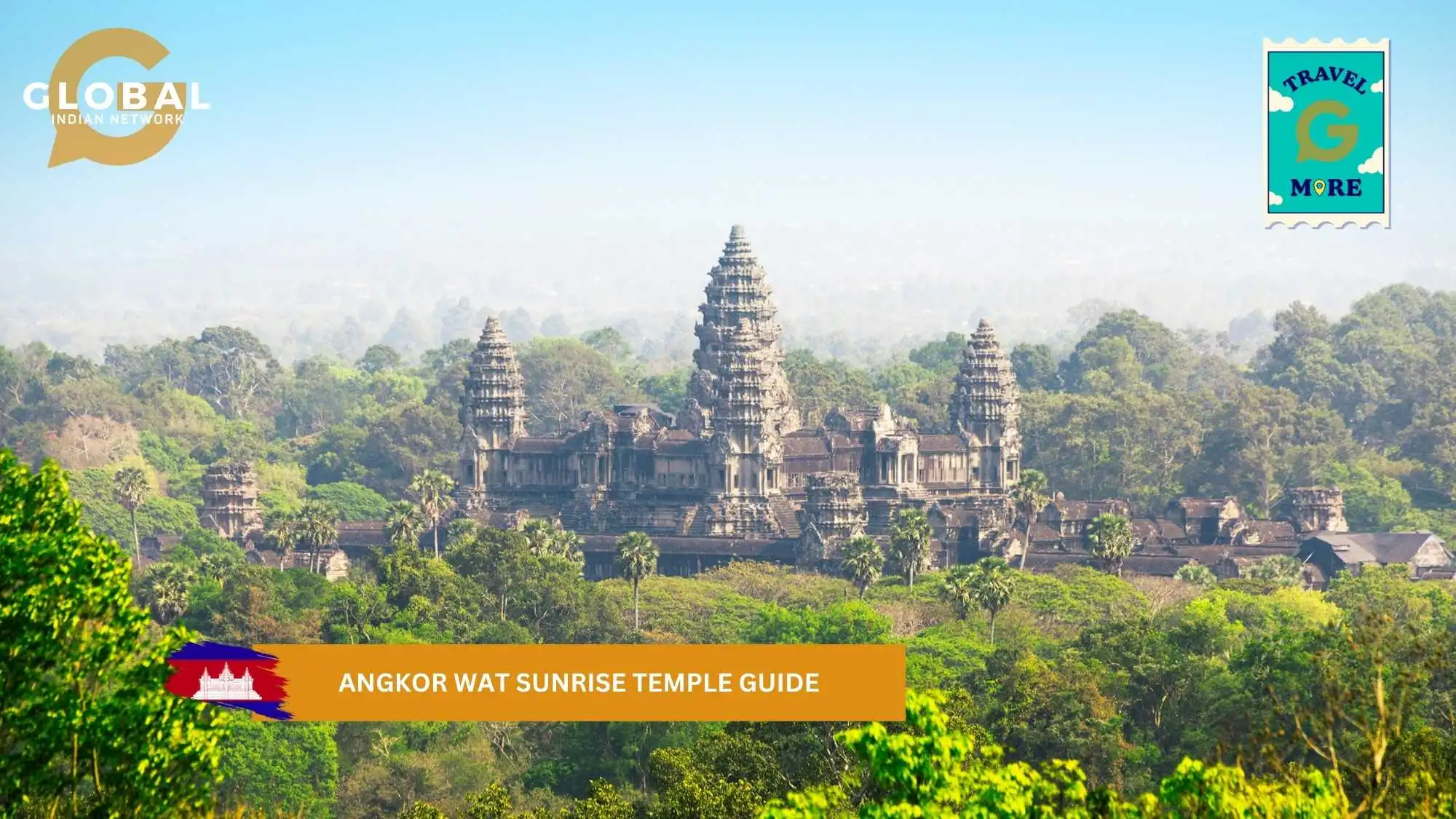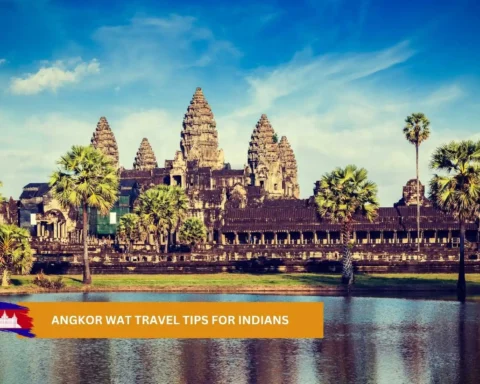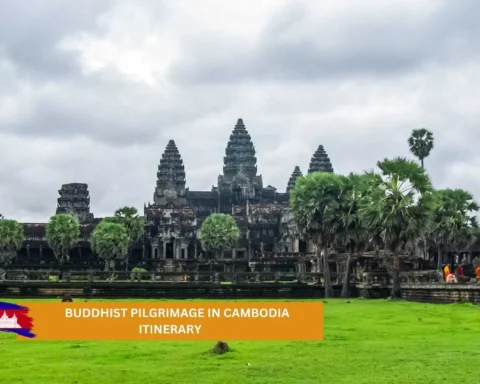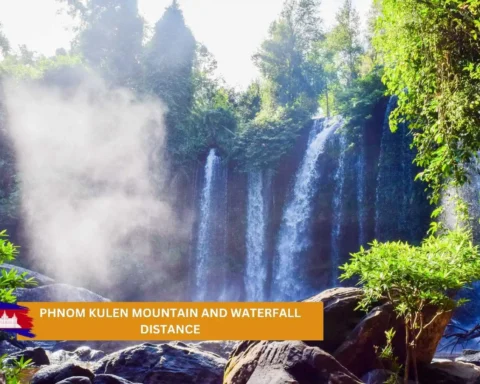No trip to Cambodia is complete without witnessing the mystical sunrise at Angkor Wat. As the sky glows pink over ancient spires and the reflection dances on the lotus pond, visitors from across Southeast Asia and beyond gather in silence to experience one of the most breathtaking sights in the world. This Angkor Wat sunrise temple guide will help you plan your visit—from when to arrive and where to stand, to how to navigate the vast temple complex at the heart of the Angkor Archaeological Park.
Built during the early 12th century by King Suryavarman II, Angkor Wat began as a Hindu temple dedicated to Vishnu and later transitioned into a Buddhist temple. Its grandeur speaks to the power and reach of the Khmer Empire, and its significance remains unrivaled across the Angkor complex. This guide offers everything you need to know for a smooth and memorable sunrise visit, while also covering nearby sites like Ta Prohm, Bayon Temple, and Phnom Bakheng within the greater Angkor Temples network.
Table of Contents
Angkor Wat Sunrise Temple Guide
When and Where to Watch the Sunrise at Angkor Wat
Planning your sunrise visit begins with timing. Most travelers aim to arrive by 4:45 to 5:00 a.m. in order to secure the best spot along the northern edge of the reflecting pool in front of Angkor Wat’s main causeway. This location offers the iconic symmetrical view of the five towers mirrored in water as the sky shifts from indigo to gold.
The best months for a clear view of the sunrise at Angkor Wat are between November and March, during Cambodia’s dry season. You’ll want to bring a flashlight or headlamp for the dark pre-dawn walk through the temple gates. It’s also wise to carry insect repellent, as early mornings in the tropics attract plenty of mosquitoes.
While most visitors flock to the reflection pool, alternative sunrise vantage points include behind the central sanctuary or even the upper tiers (once they open after 7:30 a.m.). For those seeking fewer crowds, Phnom Bakheng offers a panoramic sunrise view across the Angkor Park, though it’s a short uphill hike.

What to Bring, What to Wear, and How to Get There
To enter the Angkor Archaeological Park, you must purchase an Angkor Ticket at the Angkor Ticket Office, located just outside Siem Reap. Tickets come in 1-day, 3-day, or 7-day options. The Angkor Wat Ticket Office opens as early as 4:30 a.m. to accommodate sunrise visitors. Be sure to keep your Angkor Pass visible at all checkpoints.
As Angkor Wat is both a Buddhist site and a cultural monument, visitors must dress modestly. Cover your shoulders and knees, especially if you plan to enter the central sanctuary. Breathable, lightweight clothing is best. Comfortable walking shoes are a must for exploring the extensive temple complex, which includes steep stairs, uneven stone paths, and jungle trails.
Pack a water bottle, snacks, sunscreen, a hat, and your insect repellent. Many tuk-tuk drivers offer pre-dawn pickup from Phnom Penh hotels or Siem Reap guesthouses and will wait while you explore. You can also book sunrise tours with local guides, often through ethical groups like the Pagna Cambodia Education Fund.
Exploring the Highlights: Angkor Thom, Ta Prohm, Bayon and Beyond
Once the sun has risen and crowds begin to disperse from Angkor Wat, take the opportunity to explore nearby wonders within the greater Angkor Temples region. First on your list should be Angkor Thom, the walled royal city built by Jayavarman VII. It houses several key sites, including Bayon Temple, known for its towers carved with massive smiling faces.
Next, head to Ta Prohm Temple, famously engulfed by tree roots and featured in the movie Tomb Raider. Often called the Ta Prohm jungle temple, it offers a mystical glimpse of how nature reclaimed stone. While Ta Prohm is one of the most popular temples after Angkor Wat, visiting early keeps crowds manageable.
If time allows, make your way to Phnom Bakheng for sweeping views over the Angkor complex. As the original state temple of the early Angkor kings, it predates Angkor Wat and holds significance in both Khmer civilization and early urban planning.
For history lovers, nearby museums like the Cambodia Landmine Museum and War Museum Cambodia provide sobering context to the country’s recent past, balancing the grandeur of the Khmer Empire with Cambodia’s modern challenges.
Conclusion
This Angkor Wat sunrise temple guide is your key to unlocking one of the world’s most unforgettable travel experiences. Whether you’re a history enthusiast tracing the footsteps of the Khmer Empire or a photographer seeking the perfect golden-hour shot, a sunrise visit to Angkor Wat is a moving and humbling experience. Beyond the beauty of the Angkor Wat Temple Sunrise, the surrounding Angkor Temples, including Ta Prohm, Bayon, and Phnom Bakheng, reveal the vast scope and ingenuity of Khmer civilization.
With proper preparation, respectful behavior, and a spirit of exploration, your time at Angkor Wat will be deeply rewarding. From navigating the Angkor temple pass system to understanding the unique layout of each temple complex, this guide ensures you’re ready to experience the full magic of sunrise in one of the most extraordinary historical sites on Earth.

FAQs
Which is the best temple for Sunrise at Angkor Wat?
Phnom Bakheng is the first major temple constructed in the early 10th century in Angkor Wat. While only the ruins remain today, the place gives you an idea of the glorious days of the Khmer Empire. Situated at a height of 70 meters, the temple is a prominent spot for sunrise amongst sunrise chasers.
Is there a dress code for Angkor Wat?
When visiting Angkor Wat, it’s essential to dress respectfully by covering your shoulders and knees. This means avoiding sleeveless tops, tank tops, short shorts, and skirts or dresses that don’t reach at least your knees.
Is photography allowed at Angkor Wat?
Yes, photography is allowed at Angkor Wat for both sunrise and sunset events. For sunset, Plan to be there by 3:30 pm. By 5:30 pm, the sun has set, and by 6 pm, the light is gone. The upper terrace of Angkor Wat will be the vantage point for sunset shots.









